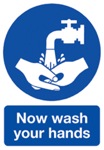Thinking about testing your genes? Buy a pair of jeans instead.
Some months ago, scientists sent samples of the same DNA to several direct-to- consumer (DTC) genetic testing services. When the reports came back the interpretations of the findings were wildly different. This has just been confirmed by the General Accounting Office and was reported on this week in Washington. So if you want to know if you’re predisposed to some ailment, don’t bother spending the $300 to $1,000 that these tests cost.
Even worse than the rotten results were the horrific marketing practices that the GAO uncovered: One firm claimed that the product they sold could “repair DNA.” Others claimed they could tell parents which sports their children would do well in. One woman was told she would definitely develop breast cancer, while another was assured that the company would test her fiancé’s DNA secretly.Read full post...












